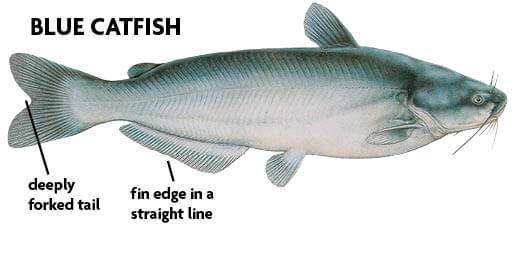Blue Catfish
The blue catfish (Ictalurus furcatus) is the largest species of North American catfish, reaching a length of 165 cm (65 in) and a weight of 68 kg (150 lb). The typical length is about 25–46 in (64–117 cm). The fish can live to 20 years. The native distribution of blue catfish is primarily in the Mississippi River drainage, including the Missouri, Ohio, Tennessee, and Arkansas Rivers, The Des Moines River in South Central Iowa, and the Rio Grande, and south along the Gulf Coast to Belize and Guatemala.[2] These large catfish have also been introduced in a number of reservoirs and rivers, notably the Santee Cooper lakes of Lake Marion and Lake Moultrie in South Carolina, the James River in Virginia, Powerton Lake in Pekin, Illinois, and Springfield Lake in Springfield, Illinois. This fish is also found in some lakes in Florida.[3] The fish is considered an invasive pest in some areas, particularly the Chesapeake Bay. Blue catfish can tolerate brackish water, thus can colonize along inland waterways of coastal regions.
Blue catfish are often misidentified as channel catfish. Blue catfish are heavy bodied, blueish gray in color, and have a dorsal hump.[11] The best way to tell the difference between a channel catfish and a blue catfish is to count the number of rays on the anal fin. A blue catfish has 30–36 rays, whereas a channel catfish has 25–29.[11] Blue catfish also have barbels, a deeply forked tail, and a protruding upper jaw.
Blue catfish are opportunistic predators and eat any species of fish they can catch, along with crawfish, freshwater mussels, frogs, and other readily available aquatic food sources. Catching their prey becomes all the more easy if it is already wounded or dead, and blue catfish are noted for feeding beneath marauding schools of striped bass in open water in reservoirs or feeding on wounded baitfish that have been washed through dam spillways or power-generation turbines. Blue catfish are one of the only species of fish in the Mississippi river basin able to eat adult Asian carp

